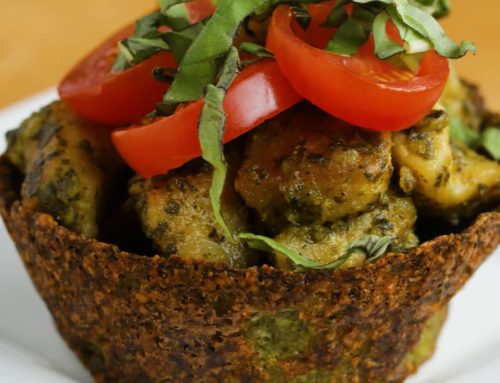The Awesome Benefits of Sweet Potatoes!
How sweet it is for your health to eat sweet potatoes! Not only do they taste like dessert, but they provide some surprising health benefits. Many people think about sweet potatoes as being nothing more than plain old potatoes that can tweak our taste buds with some extra flavor. Yet cutting-edge research on sweet potatoes tells us that nothing could be further from the truth as they have so many unique nutritional benefits to offer!
One difficulty in describing the health benefits of sweet potatoes is knowing where to begin. There are a surprising number of nutrient categories responsible for the health benefits of this underappreciated tuber. Among these categories are antioxidants, anti-inflammatory nutrients, and blood sugar-regulating nutrients. Each category brings with it valuable health benefits.
One of the more intriguing nutrient groups provided by sweet potatoes—yet one of the least studied from a health standpoint—are the resin glycosides. These nutrients are sugar-related and starch-related molecules that are unusual in their arrangement of carbohydrate-related components, and also in their inclusion of some non-carbohydrate molecules. In sweet potatoes, researchers have long been aware of one group of resin glycosides called batatins (including batatin I and batatin II). But only recently have researchers discovered a related group of glycosides in sweet potato called batatosides (including batatodide III, batatoside IV, and batatoside V). In lab studies, most of these sweet potato glycosides have been shown to have antibacterial and antifungal properties. To what extent these carbohydrate-related molecules in sweet potatoes can provide us with health benefits in these same antibacterial and antifungal areas is not yet clear. But we expect to see increasing interest in sweet potato’s batatins and batatosides and their potential to support our health.
Description
Although sweet potatoes may be part of the Thanksgiving tradition, be sure to add these wonderful naturally sweet vegetables to your meals throughout the year; they are some of the most nutritious vegetables around. Sweet potatoes can be found in your local markets year-round, however they are in season in November and December.
While many people lump all potatoes into one category, potatoes can actually be quite different in terms of their taste, flavor, texture, and nutrients. Sweet potatoes are no exception! Sweet potatoes belong to an entirely different food family than either yams or the common potato that is such a large part of the U.S. diet.
Depending upon the variety, of which there are about 400, the skin and flesh of the sweet potato may be almost white, cream, yellow, orange, pink, or deep purple, although white/cream and yellow-orange flesh are most common. Sometimes this root vegetable will be shaped like a potato, being short and blocky with rounded ends, while other times it will be longer with tapered ends.
Sweet Potatoes and Yams
In the U.S., there is often much confusion between sweet potatoes and yams. They are completely different foods, belonging to different plant families. Sweet potatoes are much more highly available in the U.S. than are yams.
This confusion exists for two reasons. First, as a shopper, it is possible for you to find sweet potatoes and yams that look reasonably alike in terms of size, skin color, and flesh color. Second, government agencies have allowed these terms to be used somewhat interchangeably on labeling, so that you often cannot rely on the grocery store signs to help you determine whether you are looking at a bin full of sweet potatoes or a bin full of yams. For example, in many stores you can find bins that are labeled “Red Garnet Yams” and “Jewel Yams” and the foods in these bins are actually sweet potatoes. Here are some general practical rules that you can follow.
- In most U.S. groceries, you should assume that you are always purchasing a sweet potato, even if the sign says “yams.”Over 1 million sweet potatoes are commercially grown in the U.S. each year, while commercial production of yams in the U.S. is rare.
- Don’t use flesh color to decide whether you are getting a sweet potato or a yam. Both root vegetables come in a variety of colors. Once again, you should assume that you are getting a sweet potato regardless of flesh color.
- If you are specially seeking a true yam (from the plant genus Dioscorea), it might be helpful to visit a more internationally focused store that specializes in foods from tropical countries.
Here is a little more background about the relationship between sweet potatoes and yams.
The name “yam” was adopted from “nyami“—the Fulani (West African) word that means “to eat” and that has traditionally been used to refer to yams. Yams are native to Africa and Asia, and unlike potatoes, they have the potential to grow to a much larger size.
How to Select and Store
Choose sweet potatoes that are firm and do not have any cracks, bruises or soft spots. Avoid those that are displayed in the refrigerated section of the produce department since cold temperature negatively alters their taste.
At WHFoods, we encourage the purchase of certified organically grown foods, and sweet potatoes are no exception. Repeated research studies on organic foods as a group show that your likelihood of exposure to contaminants such as pesticides and heavy metals can be greatly reduced through the purchased of certified organic foods, including sweet potatoes. In many cases, you may be able to find a local organic grower who sells sweet ptoatoes but has not applied for formal organic certification either through the U.S. Department of Agriculture (USDA) or through a state agency. (Examples of states offering state-certified organic foods include California, New York, Oregon, Vermont, and Washington.) However, if you are shopping in a large supermarket, your most reliable source of organically grown sweet potatoes is very likely to be sweet potatoes that display the USDA organic logo.
Sweet potatoes should be stored in a cool, dark and well-ventilated place, where they will keep fresh for up to ten days. Ideally, they should be kept out of the refrigerator in a cool, dry, dark place not above 60°F /15°C, which would fit the characteristics of a root cellar. Yet since most people don’t have root cellars, we’d suggest just keeping your sweet potatoes loose (not in a plastic bag, but if desired, a brown paper bag with multiple air holes punched in it will work) and storing them in a cool, dark, and well-ventilated cupboard away from sources of excess heat (like the stove).
Tips for Preparing and Cooking
Tips for Preparing Sweet Potatoes
If you purchase organically grown sweet potatoes, you can eat the entire tuber, flesh and skin. Yet, if you buy conventionally grown ones, you should peel them before eating since sometimes the skin is treated with dye or wax; if preparing the sweet potato whole, just peel it after cooking.
As the flesh of sweet potatoes will darken upon contact with the air, you should cook them immediately after peeling and/or cutting them. If this is not possible, to prevent oxidation, keep them in a bowl covered completely with water until you are ready to cook them.
The Nutrient-Rich Way of Cooking Sweet Potatoes
Fortunately, from a nutrition standpoint, you have a number of good options for cooking sweet potatoes. While we have our own personal recommendation (namely, Quick Steaming) here are some additional options that you may want to consider: Boiling: In several studies looking at the bioavailability of beta-carotene from sweet potatoes, boiling has been shown to be an effective cooking method. Consumption of boiled and mashed sweet potatoes has been shown to raise blood levels of vitamin A in children. When compared to roasting or baking, boiling has also been shown to have a more favorable impact on blood sugar regulation and to provide sweet potatoes with a lower glycemic index (GI) value. In one study, the average GI value for roasted sweet potato was 82, for baked sweet potato 94, and for boiled sweet potato 46. Stir-Frying: Multiple studies have shown better absorption of the beta-carotene from sweet potatoes when fat-containing foods are consumed along with the sweet potatoes. (It doesn’t take much fat for this better absorption to take place—only 3-5 grams.) What fat makes possible is the conversion of beta-carotene into a special form called micellar form. Micelles are specialized collections of molecules that allow fat-soluble substances (like beta-carotene) to move around comfortably in non-fat environments (like our water-based bloodstream). They can also make it easier for fat-soluble substances to get absorbed from our digestive tract. Among several studies that have shown the benefits of a fat-containing meal for absorption of beta-carotene from foods sweet potatoes, one study has shown that stir-frying in oil is one specific cooking technique for sweet potatoes that can enhance the bioavailability of their beta-carotene. It’s interesting to note that the sweet potato stir-fry in this study used a very low stir-frying temperature of 200°F (93°C) and that only 5 minutes of stir-frying were required to achieve the beta-carotene bioavailability benefits.
While we recognize boiling and stir-frying as viable options for cooking sweet potatoes, we recommend Quick Steaming of sweet potatoes for maximum flavor.
Quick Steaming—similar to Quick Boiling and Healthy Sauté, our other recommended cooking methods—follows three basic cooking guidelines that are generally associated in food science research with improved nutrient retention. These three guidelines are: (1) minimal necessary heat exposure; (2) minimal necessary cooking duration; (3) minimal necessary food surface contact with cooking liquid.
Our basic logic here is simple. It’s easily possible to add a small amount of fat (like a tablespoon of extra virgin olive oil) to your sweet potato recipe after the sweet potatoes have been cooked. In that way, you will be able to avoid any heating of vegetable oils that might damage their heat-sensitive nutrients. At the same time, with the practice of steaming, you’ll be able to avoid submersion of the sweet potato in boiling water. That kind of submersion could result in the leeching of additional water-soluble nutrients from the sweet potato. Our Quick Steaming method for sweet potatoes is quite simple: Fill the bottom of a steamer pot with 2 inches of water. While waiting for the water to come to a rapid boil, slice potatoes into 1/2-inch slices. Steam for 7 minutes and toss with our Mediterranean Dressing and top with your favorite optional ingredients. For details see, 7-Minute Sweet Potatoes.
How to Enjoy
A Few Quick Serving Ideas
- Purée cooked sweet potatoes with bananas, maple syrup and cinnamon. Top with chopped walnuts. The fat content of the walnuts will help you get optimal absorption of the beta-carotene in the sweet potatoes.
- Steam cubed sweet potatoes, tofu, and broccoli. Mix in raisins and serve hot or cold with a curried vinaigrette dressing. Once again, the oil in the vinaigrette will help you improve the bioavailability of the sweet potatoes’ beta-carotene.
- Baked sweet potatoes are delicious even when served cold and therefore make a great food to pack in to-go lunches.






